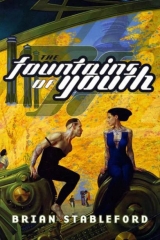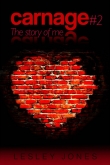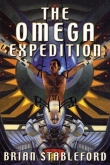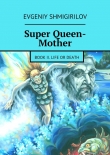
Текст книги "The Fountains of Youth"
Автор книги: Brian Stableford
Жанр:
Космическая фантастика
сообщить о нарушении
Текущая страница: 13 (всего у книги 27 страниц)
THIRTY-SEVEN
The third part of The History of Death, entitled The Empires of Faith, was decanted into the Labyrinth in August 2693. In a defensive introduction I announced that I had been forced to modify my initial ambition to write a truly comprehensive history and acknowledged that my previous hyper-Gordian knot had not been worthy of the name of aleph because it had been so overly ethnocentric. I explained that I hoped to correct this fault by degrees but admitted that I was unlikely ever to attain a genuinely universal breadth. I promised, however, to do my utmost to be eclectic and to provide my future commentaries with as much supportive justification as was practicable.
This apology was not as sincere as it was designed to seem. It might have been more honest to admit that I did not wish to be a mere archivist of death and feared getting bogged down in the sheer mass of the data that pertained to my current and future researches. I could not regard all episodes in humankind’s war against death as being of equal interest, and I wanted to be free to ignore those which I thought peripheral and repetitive. I was more far interested in interpretation than mere summary.
I justified that in my text by arguing that insofar as the war against death had been a moral crusade, I felt fully entitled to draw morals from it.
This preface, understandably, dismayed those critics who had already urged me to be more dispassionate. Some academic reviewers were content to condemn the new volume without even bothering to inspect the rest of the commentary, although that sector of the book was no longer than the equivalent sector of the second part and seemed to me to benefit from a rather more fluent style. It is, of course, possible that the reviewers were put off by the abundance of the data collated in support, which was indeed fearsome.
Other critics complained of my commentary that the day of “mute text” was dead and gone and that there was no place in the modern world for arguments whose primary illustrations resolutely refused to move, but I disregarded them as mere fashion victims. The imminent death of unembellished text had been announced so many times before that the new attempt to bury it seemed puerile.
Unlike many of my contemporaries, whose birth into a world in which religious faith was almost extinct had robbed them of all sympathy for the imperialists of dogma, I proposed that the great religions had been one of the finest achievements of humankind. I regarded their development as a vital stage in the evolution of society, considering them as social technologies whose use had permitted a spectacular transcendence of the former—tribal and regional—limits of community.
Faiths, I suggested, were the first instruments that were capable of binding together different language groups, and even different races. It was not until the spread of the great religions, I pointed out, that the possibility came into being of gathering all men together into a single common enterprise.
I was not recklessly incautious in offering these observations. I took care to regret that the principal product of this great dream had been two millennia of bitter and savage conflict between adherents of different faiths, and between adherents of different versions of the same faith. I was not content, however, simply to praise the ambition while deploring its misshapen outcome. I retained some slight sympathy for those jihads and crusades in whose formulation people had tried to attribute more meaning to the sacrifice of life than they ever had before.
I had already examined, in the first part of my history, the implications of the fact that one of the most common pre-Crash synonyms for human being—derived, of course, from the ancient Greek—was mortal, and that the term had continued to carry even greater significance once the prospect of emortality was in sight. Now I examined the implications of the the most common Latin-derived synonym for human being: individual
To describe humans as “undivided ones” is to take it for granted that death divides, and that the mortal part of humanity is neither the only nor the most vital part. This blatant fiction, I suggested, was the most powerful of all the weapons deployed by primitive mortals in their psychological war against death. Whereas other historians of my own day thought it a hastily improvised crutch, I saw it as an item of field artillery, parent of the heavy cannon of prophecy and scripture.
My comparative analysis of the great religious traditions was, I hope, reasonably evenhanded. I tried to pay appropriate compliments to all of them. Inevitably, the summation that attracted the most criticism, in a world that was still host to more than four million self-proclaimed Buddhists, three million Jews, two million Hindus and nearly three hundred thousand followers of Islam, was that of Christianity—the only great religion to have been officially declared extinct.
To tell the truth, I was particularly fascinated by the symbology of the Christian mythos, which had taken as its central image the death on the cross of Jesus and had tried to make that one image of death carry an enormous allegorical load. I was entranced for a while by the idea of Christ’s death as a force of redemption and salvation: by the daring pretense that this person had died for others.I extended my argument to take in the Christian martyrs, who had added to the primal crucifixion a vast series of symbolic and morally significant deaths. This collectivity of legends, I suggested, ought to be regarded as a colossal achievement of the imagination, a crucial victory by which death and its handmaiden, pain, were dramatically transfigured in the theater of the human imagination.
I was somewhat less impressed by the Christian conversion of the idea of death as a kind of reconciliation: a gateway to heaven, if properly met; a gateway to hell, if not. It seemed to me to be less ambitious as well as less original than the central motif of the crucified Christ. The idea of absolution from sin following confession, particularly the notion of deathbed repentance, seemed to me to be a tolerably daring raid into the territories of the imagination previously ruled by fear of death, but later confusions imported to the mythos along with the idea of God’s grace were an obvious spoliation. Even so, Christian eschatology had served its purpose, and whatever its imperfections the various versions of that eschatology had been at least as effective as those of its rival faiths.
This entire collectivity of legends, I proposed, ought to be regarded as a colossal achievement of the imagination: a crucial victory by which death and its handmaiden, pain, were dramatically transfigured in the theater of the human imagination. The fact that Christianity was now extinct was, I suggested, eloquent testimony to the efficiency with which it had done its work. In a world that had tamed and all-but-conquered death, its carefully calculated absurdities had no utility whatsoever.
THIRTY-EIGHT
Perhaps paradoxically, the majority of my critics were no better pleased by my account of the defects of Christianity than my account of its strengths. Few of my fellow historians were able to accept my view of religions as systems of psychological armaments, and their refusal even to board my train of thoughts robbed them of all sympathy for its subsequent stations, let alone its terminus. Many of them were quick to point out that it was what I applauded in Christianity that had sealed its doom on the world stage.
My critics were, of course, correct to argue that it was the ridiculous emphasis of most Christian sects on personal salvation and the imminence of apocalypse that had ensured their redundancy after the Crash. The relative success of the Eastern religious traditions in a world of putative emortals was probably ensured by their reference to a much greater timescale. I was in better agreement with conventional theory when I admitted that even true emortals could derive valuable psychological comforts and benefits from the attempt to think in terms of 4,320,000,000-year-long kalpas and 311,040,000,000,000-year-long mahakalpas, but my attempt to track the corollaries of this thesis soon departed from the common track and lost the grudging sympathy that the argument had briefly gained.
The fundamental ingenuity of the Eastern traditions could, I suggested, be seen as a brilliantly simple inversion of the key move in the Western traditions. In the West, the aim of the “individuar’ human was to win for his death-resistant element the privilege of a happy immortality. In the East, where the notion of human-as-individual never took root, the aim was not to acquire immortality but to escape it. Buddhism refused belief in a soul or “person,” asserting as an axiom that there is no permanent state underlying the ceaseless flux of physical and mental states, and that death is merely a transition between incarnations. Hope was directed toward the eventual annihilation that was nirvana rather than the salvation of heaven.
I extrapolated my own system of metaphors by suggesting that Buddhism had outlasted Christianity because the weaponry its items of faith offered for use in the war against death was more intimate and more personal, more akin to swords than cannon.
The furtherance of this analysis did not please contemporary Buddhists at all. They objected to my judgment that the doctrine of dukkha—the “ill fare” that rendered life itself inherently unsatisfactory—was a last-ditch defense all but equivalent to capitulation with the great enemy. They also disliked my account of Maya, the symbolic embodiment of the temptations and allurements that stand in the way of nirvana, and they interpreted my careful comparison of the Tibetan Book of the Deadwith its Egyptian equivalent as a disparagement. Mercifully, there were no Jains around to object to my lukewarm account of the attempt to fight death with death, seeking liberation in self-mortification and the slow saintly suicide of calculated starvation.
The surviving Hindus were no better disposed than the surviving Buddhists toward my elaborate analysis of the Advaita Vedanta and the three key figures bearing on the problem of death: Shiva, Kali, and Yama. I received several personal communications suggesting that it was a great pity that I had not made better use of the opportunities of my childhood. Had I only been prepared to listen and learn, they argued, my neighbors in the valley could have helped me to a far better understanding of the invaluable notion of the Brahman-Atman and the illusion of the world. I received other communications complaining bitterly that I had not paid due homage to Vishnu, and a further series offering to help me along the path of Yoga to a truly splendid isolation from matter.
I will freely admit that my text was incomplete and that it focused on the examples most helpful to my argument. I could not agree with the not-very-numerous contemporary practitioners of “natural magick” and shamanism that I had unjustly neglected their traditions, which had never been associated with anything remotely resembling an empire of faith, but I have to admit now that I was probably wrong to represent both Taoism and Confucianism as mere “defensive formulations” institutionalized in opposition to the spread of Buddhism. I regarded the Tao merely as a variant of the Buddhist Way, despite that it had not taught rebirth and karma, but it seems to me now that the aim of wu-wei was interestingly different from nirvana.
At the time, I was deflected from deeper analysis by the fact that later Taoism had replaced the mystic quest for eternity with a very mundane desire for longevity and postmortem security in legends of the search for the elixir of immortality and the heavenly Pure Land—although the importance of the Pure Land in the mythology of Imperial Japan, alongside the Zen-based disciplines of satori and bushido, should have made me far more attentive. In my own defense, I should point out that I did pay slightly more attention to the Confucian ideas of Yin and Yang, but only in the context of a typology of different images of the “divided individual.”
In spite of all these defects, however, I thought The Empires of Faithto be an interesting work and a useful contribution to humankind’s attempt to understand our own past.
It may seem strange to the modern reader that I had no inkling of the way in which the third part of my Historywould be read and reinterpreted by readers who had no affiliation to any préexistent religious tradition, but I simply was not thinking in those terms. I was blinkered by my preconceptions, taking it for granted that the vast majority of Earth-bound humans who did not belong to any of the eccentric minorities on whose metaphorical toes I might be trampling could all be reckoned as dispassionate rationalists much like myself.
Given that I have taken so much trouble to record the gist of my conversations with Ziru Majumdar, this may seem foolish—but even though I realized at the time that Majumdar’s philosophy must have some kind of movement behind it I had no idea how widespread that movement was. I had not the faintest idea that it was capable of exerting such a grip on the imagination of millions that it could and would be extrapolated to extremes that I can only call insane. I feel obliged to say, however, that even if I hadanticipated the uses to which the now-notorious sections of The Empires of Faithwould be put, I would not have left them out or ameliorated their tone. I was a historian in search of understanding, and those chapters of my commentary were a significant step on my intellectual journey.
No one is infallible, and I accept that there is a possibility that my analysis of Christianity may have been utterly misconceived, but I do not think that it was—and even if it had been, I would still have been justified in stating my case. I meant what I wrote, and I meant no more by what I wrote than what I intended to mean. It is not my fault that other readers imported a very different meaning into my observations or that they used the trails which I had patiently laid down in the Labyrinth to track down data for their own dark and nasty purposes. I do not regret that part three of my History of Deathbegan the work of making me famous, but I do regret that it first made me notorious, and that it did so by linking my name—firmly and, it seems, forever—with Thanaticism.
PART THREE Notoriety
We know that as a human embryo develops—and the development of the Helier womb and the Zaman transformation has done nothing to alter thisfact—its form is sculpted by death. It is shaped by the selective killing of superfluous elements of the developing cell mass. We know too that it is the permanent withering of synaptic connections in the brain that creates the preferred pathways which provide the electrical foundations of the personality. Bodily and mentally, we are etched by death. Death is the lens that focuses the potential ubiquity of DNA into the precise definition of a species and the potential ubiquity of Everyman into the precise definition of a person. Death may threaten each of us with the prospect of becoming nothing, but without the everpresence and relentless activity of death none of us could ever have become anyone.
–Hellward Lucifer Nyxson
The Thanaticist Manifesto, 2717
THIRTY-NINE
Shortly after Emily blasted off on the first leg of her journey to the outer reaches of the Oikumene I was thrown out of my hermitage by the landlord. He’d had a purchase offer he couldn’t refuse from some Bright Young Thing who wanted to demolish it and build yet another ultimate ice castle. I didn’t mind; I’d already told Emily that I intended to move, and since voicing the intention I’d begun to hunger for the color, spontaneity, and sultry abandonment of warmer climes. I decided that there would be time enough to celebrate the advent of the new Ice Age when the glaciers had reached the full extent of their reclaimed empire and that I might as well make what use I could of Gaea’s temporary fever before it cooled.
As soon as the twenty-eighth century got under way I moved to Venezuela, resolved to dwell in the gloriously restored jungles of the Orinoco, amid their teeming wildlife.,
Following the destruction of the southern part of the continent in the second nuclear war, Venezuela and Colombia had attained a cultural hegemony in South America that they had never surrendered. Brazil and Argentina had long since recovered, both economically and ecologically, from their disastrous fit of ill temper, but the upstart rivals that had overtaken them in the meantime were still considered to be the home of the avant garde of all the Americas. There was then no place on Earth that contrasted more sharply with the ice fields of Antarctica than Venezuela, and it was virtually untouched by the new legion of gantzing artists; the notorious and still-extending House of Usher had been raised out of the Orinoco mud with the aid of techniques that now seemed primeval.
I used the compensation money I had extracted from my former landlord to buy a modest hometree way upstream in La Urbana, a town that had once been the hub of a massive ecological reconstruction operation but had since become the effective terminus of the river-based tourist trade. It was a busy place by comparison with Cape Adare, but its business was conducted at a much slower pace. Its inhabitants seemed idle almost to the point of somnolence, even when they were working flat out.
I liked living beside the great river. Grizel’s death in the Kwarra was far enough behind me by then for the psychological scar to have healed, and I found it rather charming that the Venezuelans, unlike the Nigerians, had reintroduced alligators to the Orinoco shallows.
Although I was busy with overdue revisions of the first versions of parts one and two of my history, and with intensive research for part four, Emily’s criticisms made me pay far more attention than had lately become my habit to the news behindthe headlines, and it was thus that I became belatedly aware of the insidious spread of the attitudes that I had first met in the person of Ziru Majumdar and the dark fashions that were soon to climax in the rebirth of Thanaticism.
As soon as I fully understood what I had been missing I swore that I would never be so neglectful again. As thehistorian of mortality, it was plainly my duty to keep track of that tiny fraction of death’s history that was still in the making. In the beginning, however, I did not realize the significance of what was happening.
The TV pundits who became more and more anxious about “the pornography of death” initially took a censorious line, taking it for granted in their customary fashion that all sensible folk agreed with them. It did not seem to them—or to me—that there was anything new or particularly disturbing about the growing fascination with images of pain and death.
Death was, of course, still present in the world, but the end of inevitabledeath was in sight. The last false emortals had not yet passed away, but their days were numbered in the thousands, if not in the hundreds. The requiem for the Old Human Race was in progress; had there been any church bells remaining in the world, they would have been tolling for our ancestor species. In such circumstances, a revival of interest in death seemed only natural, and the frank morbidity of that interest did not seem particularly perverse or dangerous. The remaining triple rejuvenates were all celebrities, simply by virtue of having taken the technology of repair to its limits. The death of every one of them was intrinsically newsworthy—far more newsworthy, in fact, than the occasional accidental deaths of relatively young emortals.
As a historian, I was able to take a certain connoisseur pleasure in what seemed to me to be a perfectly understandable irony: that an audience of true emortals whose IT gave them complete control over the ravages of pain should have become fascinated with the idea of death. I thought it entirely appropriate that the chief corollary of that interest should be a renaissance of interest in the role that death had played in the prenanotech world, when it had almost invariably been accompanied by physical pain and psychological anguish.
Having met Ziru Majumdar, I already knew that some emortals had begun experimenting with the experience of pain. As a historian, I knew well enough that even in the earliest days of Internal Technology there had been some people who used the resilience it gave them to indulge a taste for violent and dangerous activities, and that there had been a thriving pornography of violence in the twenty-second century, born of the optimism that misled the earliest false emortals to think that they might have set foot on an escalator that would take them all the way to true emortality. Unfortunately, I was slow to combine the two items of knowledge into an anticipation of the way in which the new fascination with the pornography of death would give rise to a new masochism.
The groundwork for the so-called Thanaticist Manifesto was laid not merely by people like Ziru Majumdar but by people like Mia Czielinski. No blame attaches to Emily Marchant, of course, but her artistic adventures had made it clear to millions of people that what they had previously accepted as the bounds of aesthetic experience were far narrower than anyone had expected. Once the quest for new aesthetic experiences became worldwide, the opportunity was opened for Majumdar’s explorations in discomfort and distress to move into the cultural mainstream. Now that true emortality was almost universal, and nanotechnology was even cleverer in compensating for pain and injury than it had been in the twenty-second century, the kind of people who delighted in the reeducation of their eyes by ice palaces moved on easily enough to the supposed reeducation of their flesh, testing the limits of their psychological and physical endurance in every imaginable way.
I would probably have realized this sooner had I stayed in Antarctica, but from the viewpoint of La Urbana in the first decade of the twenty-eighth century the whole affair looked like a storm in a teacup—the teacup in question being the weird parallel universe of VE land. It was there that the new pornography of violence was produced and marketed and there that the TV pundits took leave to lament the fact and issue terrible prophecies about its likely effects. I could never take the garrulous imbeciles seriously, and the force of that habit made me laugh derisively when they first began to proclaim, in terrified tones, that the new masochism was bound to cause a new Thanaticism to rear its ugly head.
Alas, even casters have to be right sometimes.








